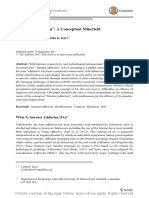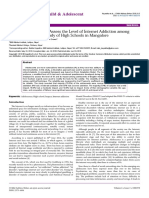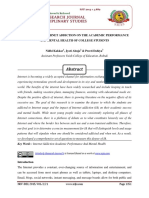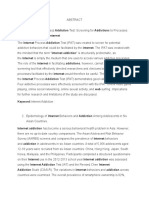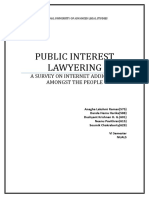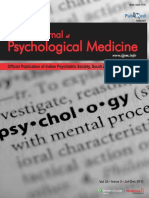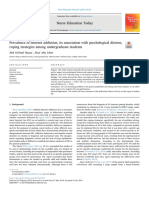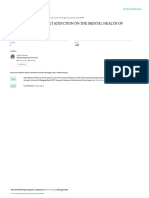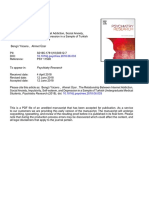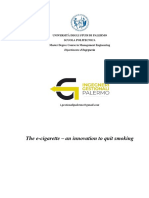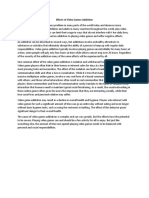0% found this document useful (0 votes)
144 views11 pagesInternet Addiction and Its Relation To The Self-Esteem Among College Students
This study explored the relationship between internet addiction and self-esteem among college students. 50 college students completed questionnaires on internet usage habits, internet addiction, and self-esteem. Results showed 44% of students had severe internet addiction, 36% had moderate addiction, and 20% had mild addiction. Higher levels of internet addiction were correlated with lower self-esteem. However, the study was limited and did not determine a causal relationship between internet addiction and self-esteem.
Uploaded by
Dexter John ColloCopyright
© © All Rights Reserved
We take content rights seriously. If you suspect this is your content, claim it here.
Available Formats
Download as DOCX, PDF, TXT or read online on Scribd
0% found this document useful (0 votes)
144 views11 pagesInternet Addiction and Its Relation To The Self-Esteem Among College Students
This study explored the relationship between internet addiction and self-esteem among college students. 50 college students completed questionnaires on internet usage habits, internet addiction, and self-esteem. Results showed 44% of students had severe internet addiction, 36% had moderate addiction, and 20% had mild addiction. Higher levels of internet addiction were correlated with lower self-esteem. However, the study was limited and did not determine a causal relationship between internet addiction and self-esteem.
Uploaded by
Dexter John ColloCopyright
© © All Rights Reserved
We take content rights seriously. If you suspect this is your content, claim it here.
Available Formats
Download as DOCX, PDF, TXT or read online on Scribd
/ 11
















